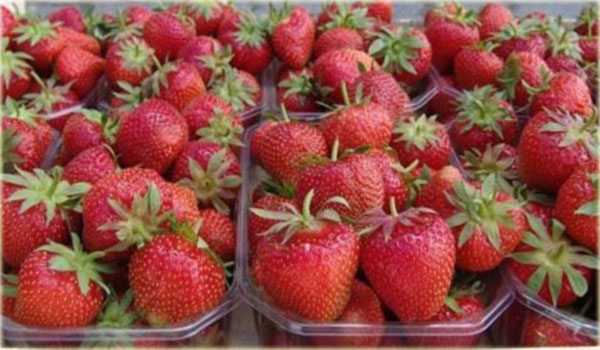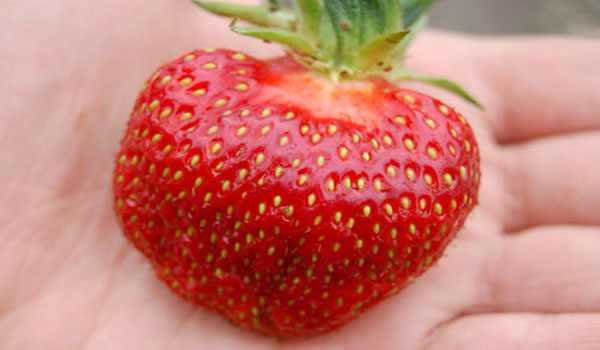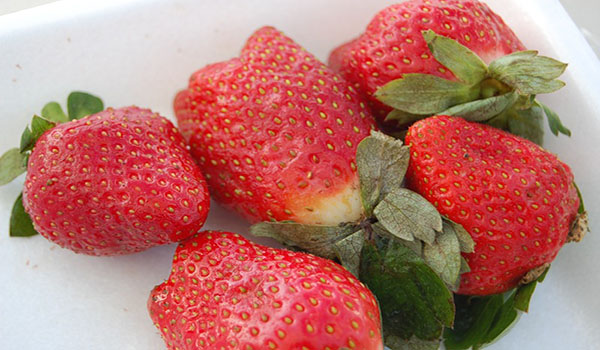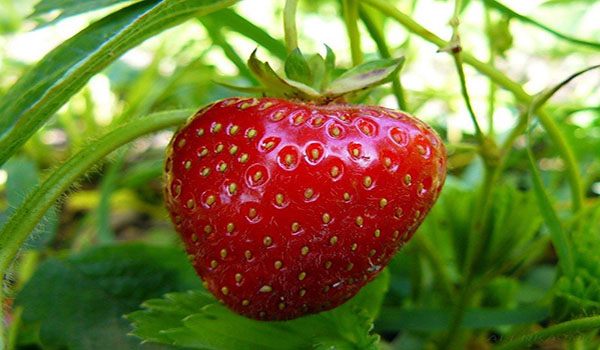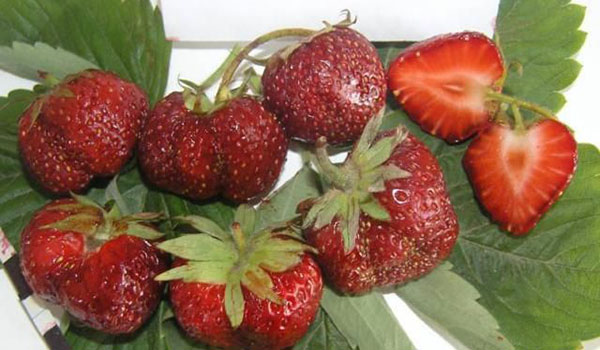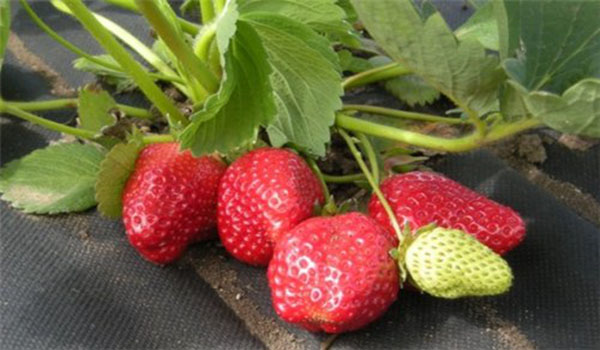The best varieties for growing strawberries in Siberia
Strawberries with their taste attracts gardeners from many regions with different climatic conditions. Breeders made sure that people from different regions could enjoy the taste of strawberries grown on their site. The inhabitants of Siberia did not remain offended either, because there are varieties suitable for growing in this harsh (in climatic aspect) region.
Content
Selection of varieties for Siberia
Such varieties must have some properties:
- be winter hardy enough to survive the winters of the region;
- recover well after loss of leaves;
- have immunity to diseases and pests of the region (strawberry mite and fruit rot);
- have sufficient yield, high-quality berries, suitable for transportation.
It is clear that all properties cannot be placed in one “ideal” variety, but it must meet several criteria. There are varieties that, in terms of their qualities, are suitable for growing in Siberia, and there are several specially bred, and then we will give a brief description of the suitable ones.
Optimal varieties for growing
Amulet
It belongs to the varieties of the medium-early ripening period of non-repaired strawberries, it is also worth noting that it is dessert. The berries are dark red in color, have a regular conical or blunt-conical shape, are large enough (they can reach a mass of 25-30 g), so the yield from a bush can reach two kilograms. The fruits reach amicably, have a sweet taste.
They are used for different purposes: for freezing, canning, but it is best to eat fresh. They are quite suitable for transportation, because they do not choke and do not let juice. Resistant to diseases, especially fungal, not influenced by strawberry mites, winter-hardy. Autumn planting is not recommended, as it negatively affects the yield. Forms little mustache.
Berdskaya Early
As the name implies, the ripening period is early, it belongs to non-renovated varieties. Berries of medium size, in the range of 15-20 g, red or, if I may say so, matte red, rounded-conical shape, can be sweet, but mostly have a sweet and sour taste.
The use of berries is dessert. The yield is high and stable, but only with impeccable care. It is recommended to grow under a film covering, an average number of whiskers is formed. Resistant to some types of diseases and pests (gray rot, strawberry mite), has a high winter hardiness, which is a plus when grown in Siberia.
Daryonka
Darenka is a variety of early non-renovated strawberries, the merit of Russian breeders. The berries are medium (15-20 g), deep red with a slightly shimmering skin, sweet and sour taste, blunt-conical in shape. Regarding the appearance of the bush, it is worth noting the large wide leaves of a pale green color, there are many mustaches of medium thickness.
It is widely used for commercial purposes (not least because of the very early ripening of the fruits that appear first on the shelves). Does not require special agrotechnical conditions, but regular watering and timely feeding is required.
It perfectly resists fungal diseases, harmful insects, also tolerates low air temperatures with a bang, and, most importantly, has a fairly high yield.
Kama
An early ripening variety of Polish origin, which appeared as a result of the crossing of Zenga Zengana and Cavalier, the name Black Prince is popular among the people. The plant produces shiny bright red berries during technical ripeness, which, when fully ripe, darken to a burgundy hue (also with taste: first, sour berries, later become sweet).
The fruits are large - 25-35 g, ribbed and with a distinct neck, have a regular rounded-rhombic shape, the pulp is dense and juicy. The plant's bushes develop well, producing many dark green leaves and few mustache (but the mustache is very powerful). The yield is over 1 kg per bush. There are disadvantages: it is often exposed to brown and white spots (in this case, modern chemicals will come to the rescue). Differs in resistance to low temperatures and drought resistance.
Maryshka
A mid-early variety, bred by Czech specialists, when grown under a film, ripens on a par with the early ones. A distinctive feature is the large, elongated (sometimes almost rectangular) dark berries, the weight of which is 25-25 grams; in total, a crop weighing up to one and a half kilograms can be harvested from the bush.
The fruit tastes sweet, with a strong aroma, but not very juicy. Due to the compactness of the bush, the peduncles do not lie on the ground, but are located above the leaves, so it is very convenient to pick berries. A little mustache is formed. Plants of this variety are resistant to spots, rot, ticks, aphids. It tolerates both drought and cold well.
Omsk early
The variety was obtained by crossing the varieties Idun and Novinka, Russian specialists from the Siberian Research Institute of Agriculture were engaged in breeding, especially for cultivation in the West Siberian region. It belongs to the early varieties. Weakly affected by diseases.
The yield is high. Berries of red or pink color weighing 10-15 g, blunt-conical, sometimes rounded, taste sweet and sour, have a strong aroma. The bush is medium-sized, with many leaves, there are few rosettes, while the peduncles are always below the level of the leaves. Not afraid of low temperatures, not damaged by strawberry bush, fungal diseases.
Pavlovchanka
Russian early ripening variety. At first, it gives relatively large fruits of red or pink color weighing up to 25 g, but then the berries become smaller and smaller, no more than 10 g, while they are of indefinite irregular shape (most likely blunt-conical). The pulp is dense, juicy, sweet and sour with a pleasant smell. Since the yield is not impressive, it is not suitable for mass cultivation.
The bushes are tall, with many leaves, the flower stalks are medium, the whiskers appear a lot, they have an average drought resistance, but they are winter hardy. They are not prone to verticillary wilting, but sometimes they are affected by spotting or gray rot.
Tanyusha
The variety was bred at the Novosibirsk Zonal Fruit and Berry Experimental Station. I. V. Michurin. Calmly tolerates droughts and frosts, ripens in medium terms. It is slightly damaged by fungal diseases, insects. The bush, as in other "Siberian" varieties, is powerful, well leafy, there are few whiskers and rosettes. The berries are small in size - 10-15 g, blunt-conical in shape, which are formed on thin stalks.
The taste is sweet and sour, the color is dark red with shining skin, quite juicy. The yield is average. One of the few varieties that are recommended for growing in the West Siberian region.
Festival Chamomile
Festivalnaya Chamomile is one of the most successful varieties bred by Ukrainian scientists in the field of breeding. Ripens in medium terms. The first berries are very large, on average about 40 g, very attractive appearance - bright red in color with shiny skin.
The appearance also matches the taste - the berries are very sweet, as they gain sugar content as they ripen, they have a rich smell.The shape is rounded-conical, with a short wide neck, the flesh is dense and juicy. The variety is distinguished by its versatility and high yield, during the season there is a huge demand for it (it should be noted that the berries do not choke during transportation). Resistant to various spots and other diseases, absolutely good in winter and dry periods.
Junia Smides
Medium ripening Latvian variety. A distinctive feature is a self-pollinated variety. Peduncles are located at the level of leaves, there are not very many rosettes. The berries are red in color with a shiny surface, can reach a weight of 30 g, but usually much less, about 15-20 g. They can taste sweet or sour-sweet, with a strong aroma.
The winter hardiness of the variety is average, the yield with good care can reach 2 kilograms per m2. Resistant to various diseases.
Choosing the right strawberry variety for growing in the Siberian region is a rather important factor, but do not forget that any fruit plants (and even more so for strawberries !!!) require constant care, and applying enough work from any varieties it is fashionable to get a satisfactory harvest.
Video "Varieties of Strawberry Varieties"
A video with a short description of the main varieties of strawberries. Planting tips on how to harvest strawberries throughout the season.

